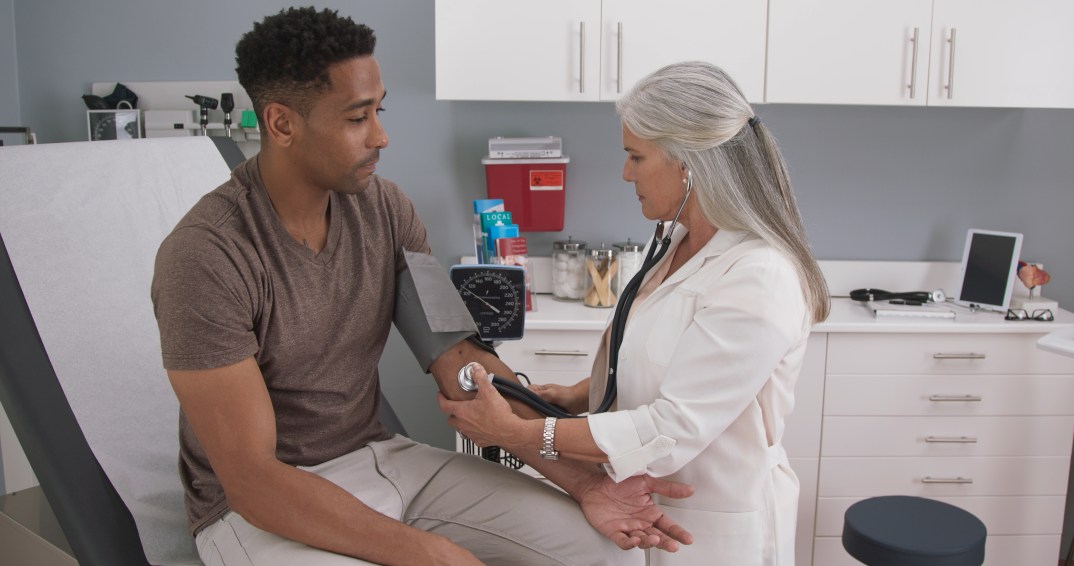How a colorblind health care system results in Black death
OPINION: Inequities in health care — from devices that don't consider darker skin tones to our exclusions from trials and studies — require that we ask questions at every level of our health care system to avoid unnecessary deaths.

Editor’s note: The following article is an op-ed, and the views expressed are the author’s own. Read more opinions on theGrio.
If you’re Black and have ever had a vitamin D test, chances are you’ve been diagnosed as Vitamin D deficient. And chances are your diagnosis was wrong.
Understanding why so many of us are misdiagnosed requires a broader understanding of the evolution of our health care system and the diagnostic tools it relies on.
You’ve probably heard about the Tuskegee experiment where the cure for syphilis was withheld from Black men for decades so doctors could study the effects of the untreated disease. You may also know of the controversy surrounding the testing of contraception techniques on Puerto Rican women. These and similar incidents are often cited as catalysts for the distrust Black and Latino communities have for the health care system and our ultimately low enrollment in clinical studies and trials.
However, our exclusion from studies and trials creates a twofold issue. Not only does a patient miss out on the potential outcomes from more advanced treatment options, but our relative exclusion from studies also means we are not adequately represented — or ultimately factored — in the development process for diagnostic tests and treatments; creating opportunities for tests and treatments that are less than optimally effective for Black and brown demographics.
Siemens Healthineers took this issue head-on a few years ago when reviewing its test for preeclampsia. A team reviewed the study data for that test and discovered that while preeclampsia far disproportionately impacts Black mothers, the population for the study used to substantiate the test’s effectiveness was predominantly white. Siemens conducted a new study with a more representative sample and ultimately improved the design and effectiveness of the test for the patients who needed it most.
Which brings me back to your Vitamin D diagnosis. A 2013 study in the New England Journal of Medicine highlighted a very similar deficiency in the majority of the world’s Vitamin D tests, while a 2018 U.S. National Institutes of Health-sponsored expert panel looked at the vitamin D paradox in Black Americans and whether Vitamin D supplements were necessary or even safe — leaving you with questionable medical guidance today.
If you aren’t already, you should be wondering how many more of your lab results fall into this category. How many false positives, or worse, false negatives have you systematically received?
But the problem extends beyond your lab results. In 2022, Apple was sued for its watch’s poor pulse oximeter performance with darker skin tones. In this case, Apple reacted to suit with an update to algorithm training sets, augmenting them with a full spectrum of skin pigments, resulting in a better-performing feature for their broad demographic of users. (It should be noted that at the end of 2023, an ITC patent infringement ruling led Apple to remove the pulse oximeter feature from some watch models.)
Health
Unfortunately, we’re not always so lucky. What was a great health equity story for Apple, is an alarming story for our nation’s hospitals and patients of color. In 2020 during the height of the COVID-19 pandemic, we lost nearly 1,000 people a day in my home state of New York, and Black patients were twice as likely to die once admitted than their white counterparts. At that time, pulse oximeters — the same type of device Apple corrected — were a key device in alerting clinicians that an ICU patient was in distress. The sad truth is that most of those faulty pulse oximeters resulted in delayed or withheld treatments for the Black and Hispanic dying fingers they were attached to every day.
This leads us to one sobering question that we sadly still cannot answer with certainty. How many of those Black and Hispanic patients among those 1,000 per day are dead because the pulse oximeters used to monitor them underperformed because of their darker hues? And how many could be alive if we did something in 2013 or in the 1970s when we first learned skin pigment could throw off readings?
If the questions leave you with a pit in your stomach (they should), then we should ask these questions at every level of our health care system. Clinicians and hospitals should ask their device manufacturers how they address the effectiveness of their products for the patient demographics they serve. Manufacturers should search the research literature and review study protocols from a modern lens to see if redesigns are necessary. And patients should have honest discussions with their physicians about their concerns.
At moderate levels, no one really suffers from taking Vitamin D supplements. But for every Vitamin D, there is a preeclampsia or a pulse oximeter. If you’re like me, you’d rather not wait for the next COVID-19 to highlight the criticality of health equity with unnecessary death.

Khalil Thomas is a health equity expert and president of TRCG, a boutique digital health consulting group that leverages regulatory compliance expertise to bring solutions to market, manage algorithm bias, and improve quality for an expanded patient demographic. He specializes in topics at the intersection of AI, health tech, and health equity; highlighting pathways for innovation-enabled equity.
Never miss a beat: Get our daily stories straight to your inbox with theGrio’s newsletter.








